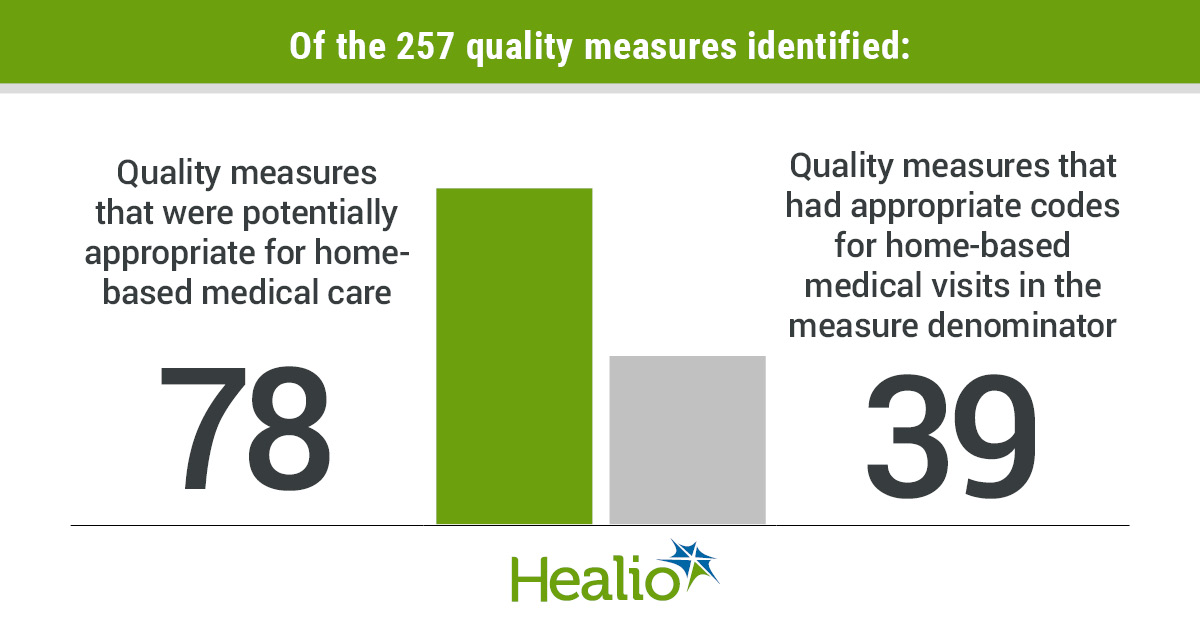Half of CMS quality measures for home-based primary care ‘unusable’

Half of quality measures from CMS’ Merit-based Incentive Payment System, or MIPS, that are relevant to home-based primary care for older adults were considered “unusable” because they lacked the appropriate codes, according to a research report published in Annals of Internal Medicine.
The lack of CMS codes for home-based primary care “severely limits” the ability for practices to provide value-based care for home-bound adults, Bruce Leff, MD, director of The Center for Transformative Geriatric Research at Johns Hopkins University School of Medicine, told Healio Primary Care.
Home-bound older adults with chronic conditions and functional impairments are a “high-need, high-cost” population, Leff said. Research has shown that providing high-quality care to these patients results in better outcomes at a lower cost.
“Unfortunately, this group is often relatively invisible to health systems and payers,” Leff said.

In the research report, Leff and colleagues wrote that leveraging performance payments through MIPS is “a potentially important opportunity” for home-based primary care practices to enter into value-based care. These performance payments are based on CMS-specified quality measures.
“A quality measure is basically a fraction,” Leff said. “The numerator specifies an action to be taken or target to be met. The denominator defines the patient population that can actually be measured.”
Denominators are usually based on visit codes such as hospital codes or office visit codes, Leff added. However, CMS MIPS quality measures often lack denominator codes for home visit evaluations, according to the authors.
“We were concerned that with the advent of value-based care such patients would be left out in the cold because the quality measures used for CMS quality programs aren't useful (and can be potentially harmful) for such a population,” Leff said. “In order to measure value, you must be able to measure quality. We do that through quality measures that CMS chooses to adopt. If a measure does not include the appropriate code in the denominator, there is no way for the measure to be applied to a population of patients.”
Leff and colleagues analyzed quality measures from five public-facing CMS websites to determine how many potentially relevant MIPS quality measures for home-based medical care visits had the necessary denominator codes.
Of the 257 quality measures that were identified, 78 were deemed to be potentially appropriate for home-based medical care, according to Leff and colleagues. Of these, only 39 had codes for home-based medical visits in the denominator.
Leff and colleagues encouraged CMS to add appropriate codes for home visits to all relevant MIPS quality measures. Home visits not only improve access to medical care, but they also allow physicians to “directly observe and address social determinants of health,” Leff said.
He also suggested that “the National Quality Forum could ensure that measure developers include appropriate codes when they develop and seek endorsement of measures that might apply to home-based medical care.” – by Janel Miller
Disclosures: Leff reports being a past president and board member of the American Academy of Home Care Medicine, a past member of Annals of Internal Medicine's editorial board, and past board member for Ascension Health. He also reports holding stock options in Dispatch Health, Honor and Medically Home and personal fees from Apple, Health Affairs, the Institute for Healthcare Improvement and Medbank. Please see the study for all other authors’ relevant financial disclosures.
